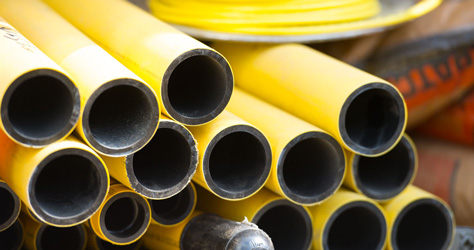BGE’s STRIDE Plan
Strategic Infrastructure Development and Enhancement Plan
Strategic Infrastructure Development and Enhancement Plan

STRIDE stands for Strategic Infrastructure Development and Enhancement Plan. It provides incentives for modernizing an aging natural gas infrastructure. Replacing the system is vital to avoid critical failures, leaks and customer reliability impacts. The program was signed into law with overwhelming bipartisan support in 2013.

BGE is on pace to complete the STRIDE project by 2042. Without STRIDE, the replacement of aging natural gas infrastructure is estimated to take 80 to 140 years.

By doing more work sooner and recovering investments as the work is performed, STRIDE works efficiently and transparently to get the job done for customers.
When the program is complete, STRIDE will deliver natural gas service to customers through approximately 1,300 miles of new natural gas lines.
Since 2014, BGE has replaced approximately 300 miles of gas mains and more than 70,000 service pipes. Aging cast-iron, bare steel and copper pipes have a higher tendency to leak or cause other safety or reliability issues.
Since 2014, pipe replacements reduced about 4.8 million pounds of methane gas – a major greenhouse gas. When BGE’s Stride plan is complete, Greenhouse Gas (GHG) emissions will have been reduced by 210,000 metric tons per year compared to 2013. That’s the equivalent of taking 44,000 cars odd the road.

The STRIDE Plan makes it possible to recover investments as the work is performed. With a more predictable, efficient cost-recovery mechanism for customers, BGE can make more investments sooner.
The law that created STRIDE includes important customer protections including a $2 monthly maximum cap on the STRIDE charge for residential gas customers. The Public Service Commission (PSC) oversees STRIDE and receives regular updates on progress from BGE. This way, the Plan provides more transparence on BGE’s investment planning.
If BGE completed STRIDE modernization plans 25% sooner (by 2035), those investments would create about $400 million in additional economic impact and $200 million in additional labor income.
If you have any questions, please fill out the form below: